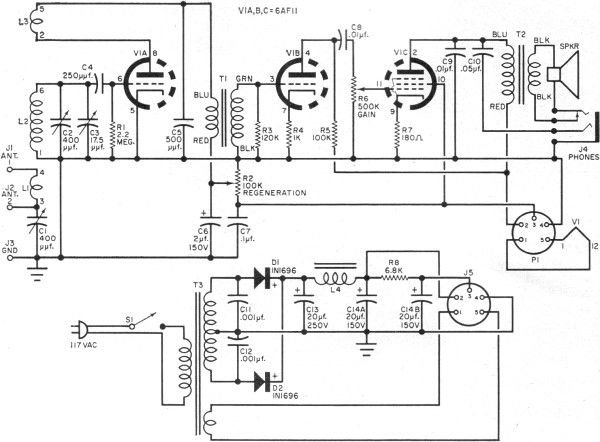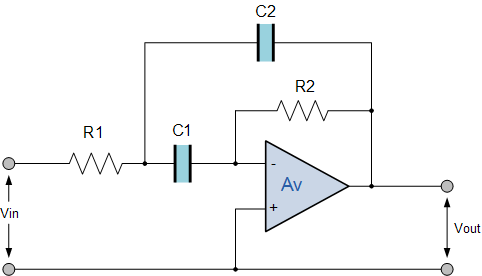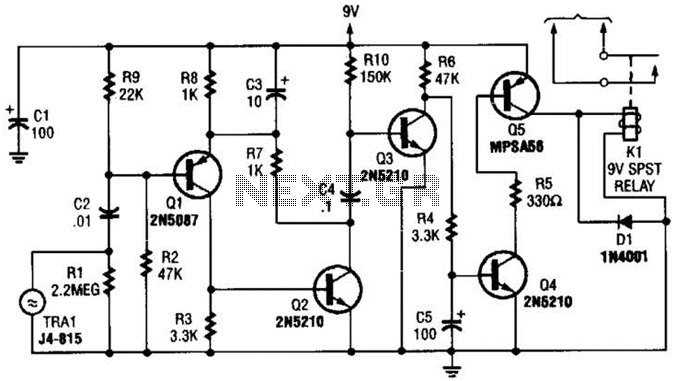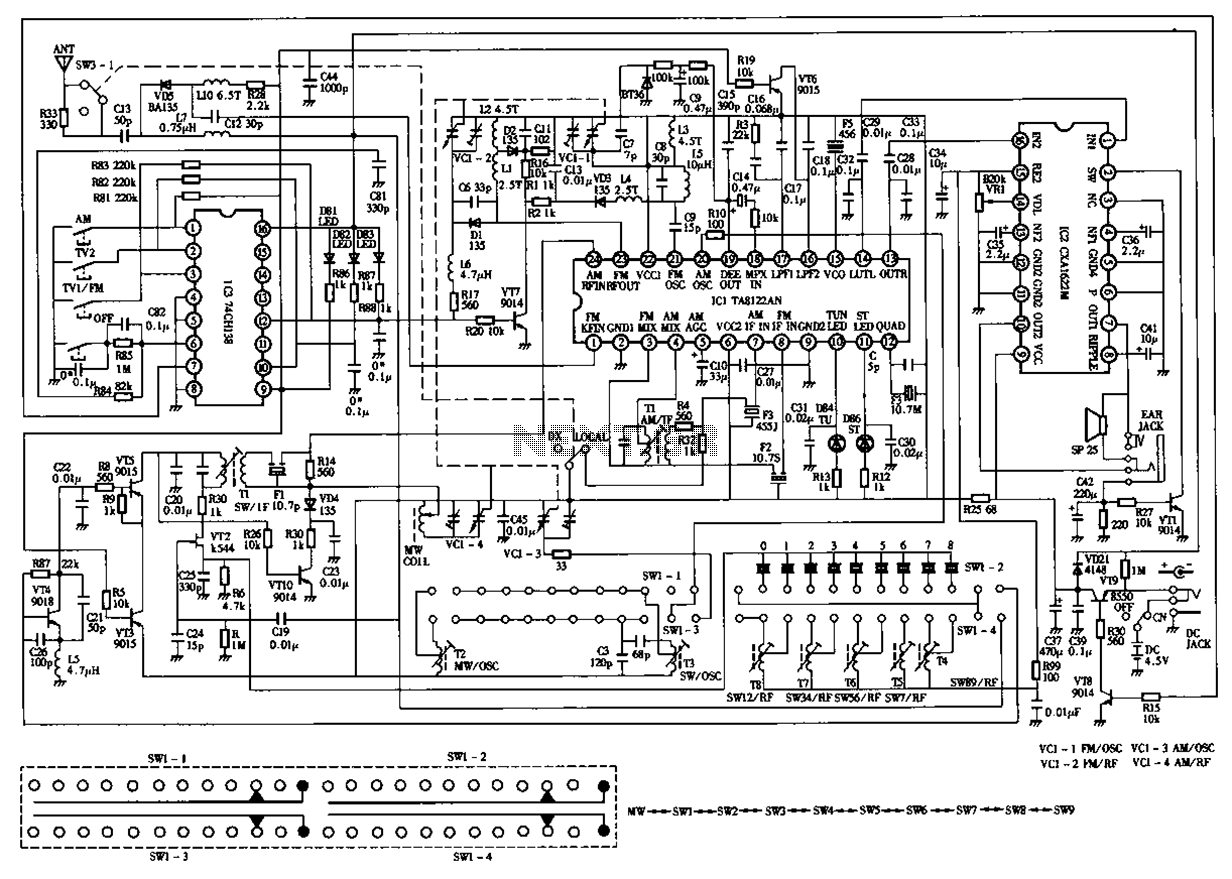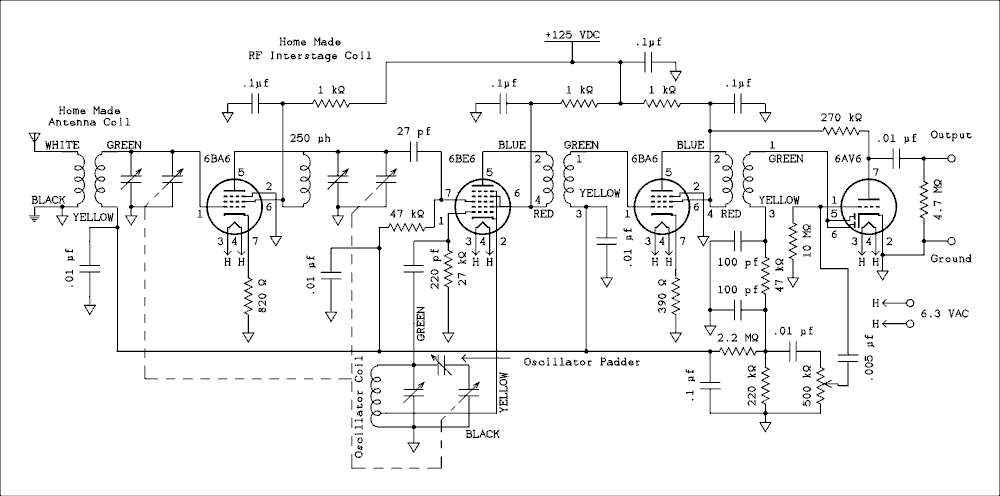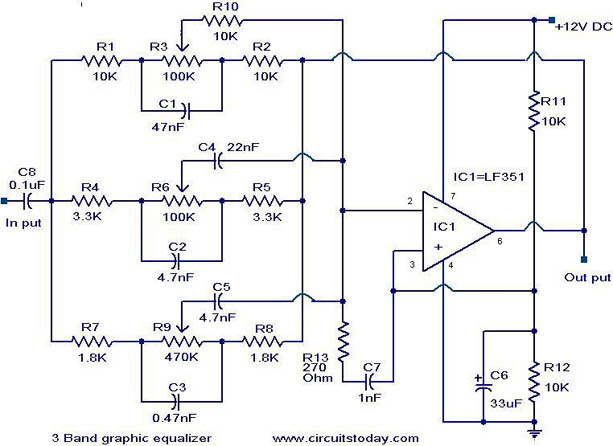
40 m Band Superhet Receiver

By adding one integrated circuit and some passive components, the previously developed 40-meter direct conversion receiver design has been transformed into a superheterodyne model. The advantages of single signal reception in this circuit are particularly appreciated by those who have listened to the crowded 40-meter band during evening hours. Simple direct conversion receiver designs typically suffer from reduced selectivity and are more prone to overload compared to even modest superheterodyne designs. Direct conversion designs are simpler because they lack an intermediate frequency (IF) stage, associated filtering, a beat frequency oscillator (BFO), and a second mixer. To modify the design for a superheterodyne model, the first oscillator frequency was increased from the original range of 7000 kHz - 7040 kHz to a revised range of 10686 kHz - 10731 kHz (operating frequency plus the intermediate frequency). The selection of this first oscillator frequency was straightforward, considering the availability of 3686 kHz crystals. Bandwidth is set to 200 Hz using a series-coupled filter (with a single 3686 kHz crystal) in the IF amplifier section, making it highly suitable for continuous wave (CW) operation. The selection of 3686 kHz for the IF allows the use of a readily available 10.7 MHz ceramic resonator in the first oscillator circuit. The first part of the circuit is the first oscillator (main tuning), which is a variation of the Colpitts type oscillator. It utilizes a 10.7 MHz ceramic resonator as its frequency-determining component. Unlike a quartz crystal-based variable oscillator (VXO), the ceramic resonator (Q1) provides a broader tuning range (approximately 45 kHz) while maintaining a desired level of frequency stability. A second ceramic resonator, centered at 7020 kHz, is employed as a front-end filter, effectively attenuating much of the strong signal interference (S9 +40 dB) from the 41-meter shortwave broadcast band. Although the shape factor and center frequency are not perfect, they perform adequately. The stop band for this resonator is located at 7125 kHz, which is well beyond the desired 7040 kHz. The availability, low cost, simplicity of the circuit, and lack of alignment requirements justify the inclusion of this specific device. A network formed by L1 and L2 matches the 330-ohm resonator impedance to the 50-ohm impedance of the diode ring mixer and the antenna. The output of the ring diode mixer is coupled to an IF stage based on the NE592 broadband amplifier. The IF selectivity is narrowed to 200 Hz by adding a crystal filter using series interstage coupling (formed by a 3686 MHz quartz crystal and resistor R8) between pins 2 and 7. The mixer sees a parallel circuit at its IF port consisting of R7 and the high input impedance of IC1. L3 and C9 create a parallel resonant circuit tuned to the IF, with the value of C9 being non-critical due to the strong damping caused by the output resistance of IC1. The second mixer, based on the NE612, serves as a product detector. The mixer output pins of the NE612 drive the differential input of the NE5532 audio amplifier. Any remaining RF energy at the output pins is shunted to ground using capacitors C14 and C15, which couple only the audio frequency (AF) signal output from the product detector stage into the audio amplifier. The AF stage has a gain of 60 dB at the 750 Hz audio filter center frequency, determined by the component values in the passive series resonant circuit formed by Dr1 and C16. The audio output volume is adjusted with an RF attenuator control (P1), located near the antenna input. The NE5532 output resistance is relatively low, allowing the use of 60-ohm headphones without requiring an additional series resistor. The receiver operates effectively across a wide range of supply voltages, from 9 V to 15 V, with the AF amplifier directly powered.
The circuit design includes several key components that enhance its performance. The first oscillator utilizes a Colpitts configuration, which is known for its stability and ability to generate a precise frequency. The ceramic resonator's broader tuning range allows for slight frequency adjustments without compromising stability, making it ideal for the application. The front-end filter, while not perfect, provides sufficient attenuation of unwanted signals, ensuring that the desired signals are more easily discernible.
The use of the NE592 broadband amplifier in the IF stage is crucial for maintaining signal integrity and selectivity. The addition of a crystal filter significantly enhances the selectivity of the receiver, allowing it to isolate signals within a narrow bandwidth of 200 Hz, which is particularly advantageous for CW operations. The design of the second mixer as a product detector further ensures that only the desired audio frequencies are amplified, while any residual RF signals are effectively filtered out.
The audio amplification stage, utilizing the NE5532, is designed to deliver a high gain while maintaining low output resistance, making it compatible with standard headphones. The volume control mechanism allows for easy adjustment of the audio output, providing user flexibility. Overall, this superheterodyne receiver design is characterized by its simplicity, effectiveness, and adaptability, making it a valuable tool for amateur radio enthusiasts.By the addition of one integrated circuit and some passive components, I was able to convert my earlier developed 40-meter direct conversion receiver design into a superhet model. Anyone who has listened to 40 meters during the evening hours on the crowded 40 m band will appreciate the advantages of the single signal reception, which this circuit
offers. All simple direct conversion receiver designs suffer from degraded selectivity performance and are more subject to overload by contrasted to even modest superhet designs. Direct conversion designs are simpler by contrast because they are missing an IF stage and any associated filtering, a BFO and the second mixer.
In order to modify the design to create a superhet model, it was necessary to increase the 1st oscillator frequency from 7000 kHz - 7040 kHz to a revised range of 10686 kHz -10731 kHz (operating frequency plus the intermediate frequency). The choice of this 1st oscillator frequency turned out to be fairly easy by considering the availability of 3686 kHz crystals.
Bandwidth is set to 200 Hz by a series coupled filter (using a single 3686 kHz crystal) in the IF amplifier section. This choice is highly suitable for CW operation. The choice of 3686 kHz IF allows use of readily available 10. 7 mHz ceramic resonator in the 1st oscillator circuit. The first part of the circuit to be described is the 1st oscillator (main tuning). It is a variation of the Colpitts type oscillator. It uses a 10, 7 ceramic resonator as its frequency-determining component. Unlike a quartz crystal based VXO, the ceramic resonator Q1 results in a much broader tuning range (approximately 45 kHz) while still maintaining a desired level of frequency stability at the same time.
A second ceramic resonator with a center frequency of 7020 kHz is used as a front-end filter. This effectively attenuates much of the strong S9 +40 dB strong signal interference from the 41-meter shortwave broadcast band. The shape factor and center frequency, while not a perfect choice, perform quite well. The stop band for this resonator appears to be located at 7125 kHz - well beyond the desired 7040 kHz.
The availability, low price, simplicity of the circuit and absence of alignment warrant suggest inclusion of this specific device. A network formed by L1 and L2 help match the 330 ohms resonator impedance to the 50 ohms of the diode ring mixer and the antenna.
The output of the ring diode mixer is coupled to an IF stage based on the NE592 broadband amplifier. I was able to narrow the IF selectivity to 200 Hz by adding a crystal filter using series interstage coupling (formed by a 3686 MHz quartz and resistor R8) between pins 2 and 7. The mixer sees at its IF port a parallel circuit consisting out of R7 and the high input impedance of IC1.
L3 and C9 form a parallel resonant circuit that is tuned to the IF. The value of C9 is not critical because the output resistance of IC1 causes strong damping. The second mixer based on the well-known NE612 and is used as a product detector. The mixer output pins of the NE612 drive the differential input of the NE5532 audio amplifier. Any remaining RF energy present at the output pins is shunted to ground by using the two capacitors C14 and C15. These effectively couple only an AF signal output from the product detector stage into the audio amplifier.
The AF stage has a gain of 60 dB at the 750 Hz audio filter center frequency. The audio filter center frequency is determined by the component values used in the passive series resonant circuit formed by Dr1 and C16. The audio output volume adjustment is controlled with an RF attenuator control P1, located close to the antenna input.
The NE5532 output resistance is relatively low, so 60 Ohms headphones can be used without an additional series resistor. The receiver operates well across a wide range of supply voltages ranging from 9 V to 15 V. The AF amplifier is directly powered 🔗 External reference
The circuit design includes several key components that enhance its performance. The first oscillator utilizes a Colpitts configuration, which is known for its stability and ability to generate a precise frequency. The ceramic resonator's broader tuning range allows for slight frequency adjustments without compromising stability, making it ideal for the application. The front-end filter, while not perfect, provides sufficient attenuation of unwanted signals, ensuring that the desired signals are more easily discernible.
The use of the NE592 broadband amplifier in the IF stage is crucial for maintaining signal integrity and selectivity. The addition of a crystal filter significantly enhances the selectivity of the receiver, allowing it to isolate signals within a narrow bandwidth of 200 Hz, which is particularly advantageous for CW operations. The design of the second mixer as a product detector further ensures that only the desired audio frequencies are amplified, while any residual RF signals are effectively filtered out.
The audio amplification stage, utilizing the NE5532, is designed to deliver a high gain while maintaining low output resistance, making it compatible with standard headphones. The volume control mechanism allows for easy adjustment of the audio output, providing user flexibility. Overall, this superheterodyne receiver design is characterized by its simplicity, effectiveness, and adaptability, making it a valuable tool for amateur radio enthusiasts.By the addition of one integrated circuit and some passive components, I was able to convert my earlier developed 40-meter direct conversion receiver design into a superhet model. Anyone who has listened to 40 meters during the evening hours on the crowded 40 m band will appreciate the advantages of the single signal reception, which this circuit
offers. All simple direct conversion receiver designs suffer from degraded selectivity performance and are more subject to overload by contrasted to even modest superhet designs. Direct conversion designs are simpler by contrast because they are missing an IF stage and any associated filtering, a BFO and the second mixer.
In order to modify the design to create a superhet model, it was necessary to increase the 1st oscillator frequency from 7000 kHz - 7040 kHz to a revised range of 10686 kHz -10731 kHz (operating frequency plus the intermediate frequency). The choice of this 1st oscillator frequency turned out to be fairly easy by considering the availability of 3686 kHz crystals.
Bandwidth is set to 200 Hz by a series coupled filter (using a single 3686 kHz crystal) in the IF amplifier section. This choice is highly suitable for CW operation. The choice of 3686 kHz IF allows use of readily available 10. 7 mHz ceramic resonator in the 1st oscillator circuit. The first part of the circuit to be described is the 1st oscillator (main tuning). It is a variation of the Colpitts type oscillator. It uses a 10, 7 ceramic resonator as its frequency-determining component. Unlike a quartz crystal based VXO, the ceramic resonator Q1 results in a much broader tuning range (approximately 45 kHz) while still maintaining a desired level of frequency stability at the same time.
A second ceramic resonator with a center frequency of 7020 kHz is used as a front-end filter. This effectively attenuates much of the strong S9 +40 dB strong signal interference from the 41-meter shortwave broadcast band. The shape factor and center frequency, while not a perfect choice, perform quite well. The stop band for this resonator appears to be located at 7125 kHz - well beyond the desired 7040 kHz.
The availability, low price, simplicity of the circuit and absence of alignment warrant suggest inclusion of this specific device. A network formed by L1 and L2 help match the 330 ohms resonator impedance to the 50 ohms of the diode ring mixer and the antenna.
The output of the ring diode mixer is coupled to an IF stage based on the NE592 broadband amplifier. I was able to narrow the IF selectivity to 200 Hz by adding a crystal filter using series interstage coupling (formed by a 3686 MHz quartz and resistor R8) between pins 2 and 7. The mixer sees at its IF port a parallel circuit consisting out of R7 and the high input impedance of IC1.
L3 and C9 form a parallel resonant circuit that is tuned to the IF. The value of C9 is not critical because the output resistance of IC1 causes strong damping. The second mixer based on the well-known NE612 and is used as a product detector. The mixer output pins of the NE612 drive the differential input of the NE5532 audio amplifier. Any remaining RF energy present at the output pins is shunted to ground by using the two capacitors C14 and C15. These effectively couple only an AF signal output from the product detector stage into the audio amplifier.
The AF stage has a gain of 60 dB at the 750 Hz audio filter center frequency. The audio filter center frequency is determined by the component values used in the passive series resonant circuit formed by Dr1 and C16. The audio output volume adjustment is controlled with an RF attenuator control P1, located close to the antenna input.
The NE5532 output resistance is relatively low, so 60 Ohms headphones can be used without an additional series resistor. The receiver operates well across a wide range of supply voltages ranging from 9 V to 15 V. The AF amplifier is directly powered 🔗 External reference
